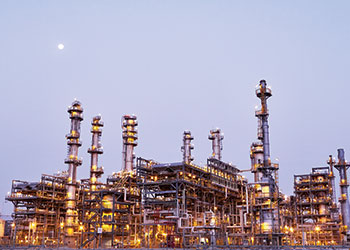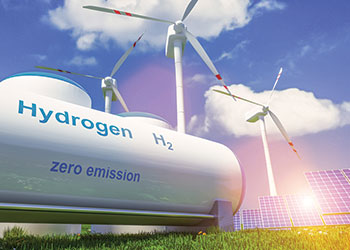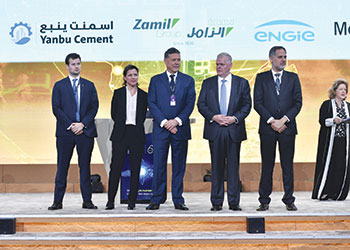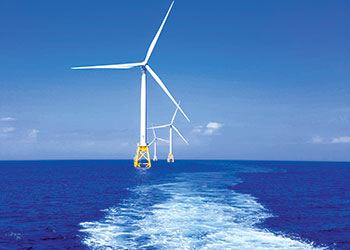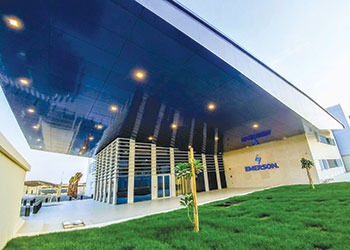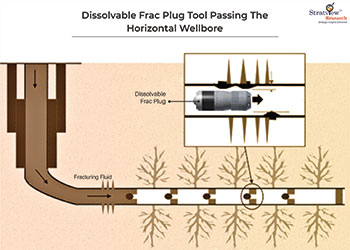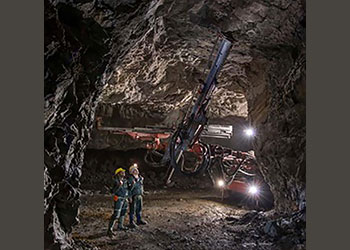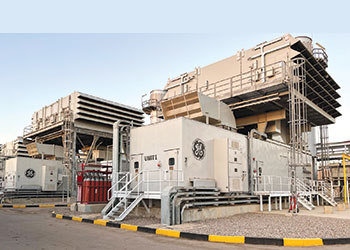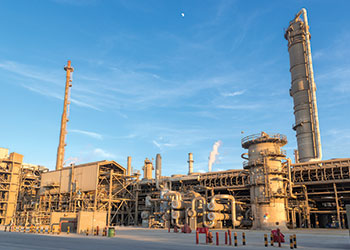
 Menke ... calls copper a red metal for a green future
Menke ... calls copper a red metal for a green future
Today’s copper demand is very much determined by its excellent conductibility, which is why it is primarily used in wiring. Looking ahead, the energy transition will become most important driver of copper demand, Carsten Menke, Head Next Generation Research, Julius Baer, tells OGN
Copper is integral to our modern, global economy and essentially builds a foundation for the digital age. It is primarily used in wiring in the widest sense of the word and why there is such a high demand for it today.
Copper can be found in the electronic devices that power our lives, for example, smartphones and computers. It can also be found in cars buildings, and household goods; and it is also used for electricity generation and transmission.
The world is currently standing at a critical juncture for the copper market. Looking ahead, two structural forces can be seen to very likely determine the trajectory of copper demand over the next few decades.
ENERGY TRANSITION
The first factor is the energy transition, which encompasses the electrification of mobility, in example the shift from internal-combustion-engine cards to electric vehicles, and the expansion of renewable energy, wind, and solar on a more decentralised power system.
Over the past two years, we have witnessed an acceleration of the energy transition as more and more electric vehicles are hitting the roads. We project that 85 per cent of all new cars sold by 2040 will be electric, and these will be dominated by battery electric vehicles.
In terms of copper consumption, these cars need around 35 kg more copper than conventional cars.
To summarise, electric vehicles will account for more than 4 million tonnes of copper consumption by 2040, up from 0.5 tonnes today.
Therefore, according to our estimates, the energy transition will become the single strongest driver of copper demand until the middle of the century. Its share of global copper demand is set to increase from about 7.5 per cent today to almost 20 per cent in 2040.
CHINA’S COPPER CONSUMPTION
The second factor is China, not only because of its sheer size and its dominance of today’s copper market, but even more so because the country appears to be reaching a tipping point in terms of demographics, economics, and politics.
In short, China will shift from boosting copper demand over the past two decades to braking it during the next two to three decades.
One key factor is a slowdown in urbanisation, which implies that over the next two decades the annual average of people moving to the cities will be around 6 million lower that during the past two decades. This does not bode well for the long-term outlook of China’s property market and the related copper demand.
MINE SUPPLY: LONGER-TERM SLOWDOWN
Taking a longer-term perspective, we are increasingly confident that the past years’ investment levels are not going to be sufficient to keep copper-mine supplies growing at the same pace that we project for the next few years.
This confidence is primarily based on the time it takes to bring a new mine to the market, which is between four and eight years, depending on whether it is a brown-field or greenfield project.
However these projects will only be developed if the copper price provides mining companies with the necessary incentive, which has not been the case over the past few years.
This should result in a slowdown in copper-mine supply growth between the mid-2020s and mid-2030s but is unlikely to cause an outright decline in supplies.
SCRAP SUPPLY: LONGER-TERM ACCELERATION
 |
The world's largest copper producers |
Further out into the future, we believe the increasing penetration of electric vehicles will accelerate the copper recycling cycle. Most cars will enter the scrapping cycle turning 10 years old – even though this very much depends on individual driving and charging habits – with the peak likely to be reached after 12 or 13 years.
Due to the economic and ecological benefits of battery recycling, as well as regulatory requirements, we assume that 95 per cent of all end-of-life batteries will enter the recycling process.
Depending on the process used and the battery metals’ mix, recovery rates should reach between 90 per cent and 100 per cent.
For copper, we project that around 75 per cent of battery-related copper demand can be sourced from recycled material by the middle of the century. This should lift global copper scrap supplies from around 4 million tonnes today to around 10 million tonnes, implying a supply share increase from 17 per cent to 28 per cent.
Such an increase in scrap supplies would be unprecedented, both in terms of size and speed, and would thus have profound impact on the copper market.
HOW TO INVEST?
 |
Investments into copper mining need to be stepped up to meet rising demand |
Due to copper’s comparably low cost of carry, futures and futures-based indices are one of the options for investors to gain exposure, as they typically track prices closely. Yet there is little potential for outperformance, unless the copper futures curve is strongly downward sloping, which is not the case at the moment.
Copper-mining companies are another option, but they tend to have a different risk and return profile than futures depending on their size, the locations where they are operating, and the experience of the management. Over a long-term horizon, copper miners should outperform the copper price due to their operating leverage, in example revenues rise faster than costs, especially if they are also able to grow their volumes.
Ultimately, the decision about how to invest in copper depends on an investors’ willingness and ability to take the related risk. While copper is generally primarily suited for risk-loving investors, futures-based indices are the more conservative option compared to diversified or specialised mining companies.
CONCLUSION: A RED METAL FOR A GREEN FUTURE
The surge in scrap supplies should however come too late to prevent the copper from falling into structural shortages until the mid-2030s which should push prices back above $10,000 per tonne, and potentially beyond, in the longer term.
Copper thus joins the energy-transition-driven battery-metals super cycle. The market is then set to swing to a structural surplus once scrap supplies pick up significantly and the China factor is felt more strongly, which should be from 2035 onwards at the latest, suggesting that the copper industry is set to face another boom-and-bust cycle.




















































































